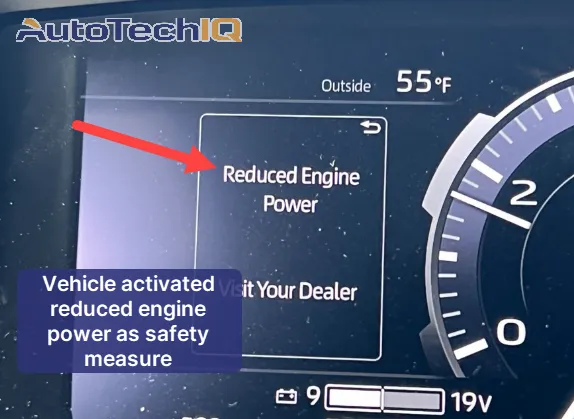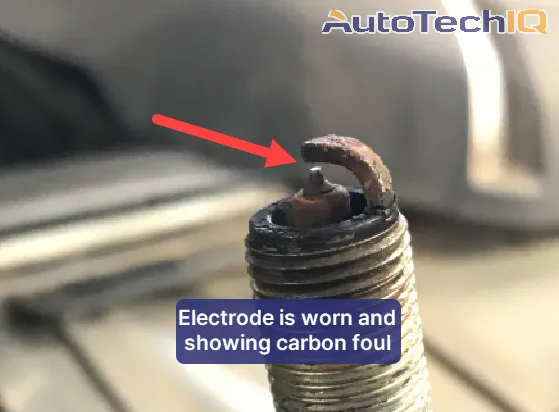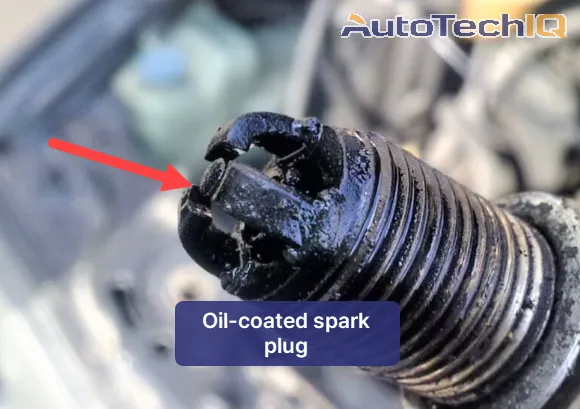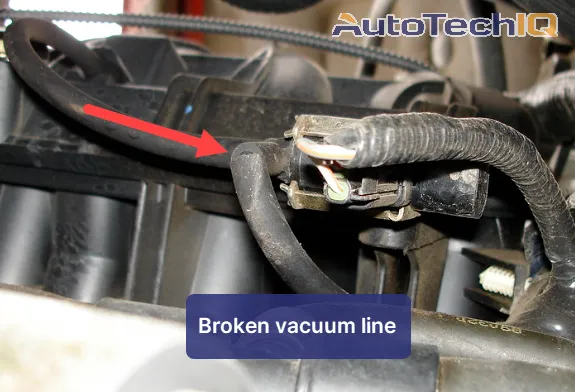
Spark plugs use electricity to create a spark inside the engine's cylinders under the hood. This spark ignites the air-fuel mixture and starts the combustion process, making your engine run. Spark plugs have perfect timing, ensuring safe ignition, good fuel efficiency, and low emissions. These parts' material is highly resistant to heat and pressure since it receives huge amounts of both.
What does a tune-up consist of?
A tune-up is an auto shop "slang" for a list of maintenance tasks to improve an engine's performance and efficiency. The list has spark plug replacement, air filter replacement, fuel filter replacement, ignition system inspection, throttle body cleaning, PCV valve replacement, timing belt adjustment, and electronic control module (ECM) scan. However, to avoid getting into the nitty-gritty of each process of this list, let's just say that a tune-up makes the car run better, more reliable, and last longer. Note that tune-ups can be different depending on how modern the car is.
How often should you change spark plugs?
Typically, copper spark plugs need replacement every 20,000 to 30,000 miles, while platinum or iridium plugs can last up to 60,000 to 100,000 miles. However, get the correct information by reading your vehicle's owner's manual for maintenance intervals; also read the manufacturer's specifications for the spark plugs. Regular maintenance and performance checks help predict the next time to change spark plugs.
What happens when spark plugs go bad?
Many symptoms appear when spark plugs go bad, which develop into serious problems. These issues include engine misfires, reduced power, bad fuel economy, rough idling, difficulty starting, increased emissions, and engine knocking. These symptoms can start and develop quickly
What does a misfire feel like?
A misfire can feel like a sudden jolt coming from the hood. You might notice a jerking sensation, like a hiccup, and the car may feel weak after. The vehicle might shudder or vibrate while driving, with softer acceleration. In some cases, the misfire happens with unusual sounds or a flashing check engine light on the dashboard.
Can you drive with bad spark plugs?
Yes, but it can quickly damage the engine until it shuts down. Plus, there'll be performance issues, continuous misfires, bad fuel efficiency, and further damage under the hood. It's best to replace bad spark plugs as soon as possible to maintain the vehicle's performance, reliability, and overall safety.
What are the most common things a driver might notice about faulty spark plugs?
Rough Idling: The engine vibrates and runs unevenly at idle, indicating a potential misfire. This occurs because bad spark plugs fail to ignite the air-fuel mixture consistently, causing cylinder misfires and rough idling.
Reduced Power: A noticeable loss of power and sluggish acceleration can occur due to incomplete combustion caused by ineffective spark plugs.

Poor Fuel Efficiency: Bad spark plugs can lead to incomplete combustion, wasting fuel and reducing fuel efficiency.
Misfires: Frequent misfires, felt as jolts or hesitations while driving, signal inefficient combustion due to worn spark plugs.
Hard Starting: Difficulty starting the engine, especially in cold conditions, can be attributed to spark plugs struggling to generate a strong spark for ignition.
Increased Emissions: Failing spark plugs can result in higher emissions, leading to environmental concerns and potential compliance issues with emission standards.
Engine Knocking: Detonation or knocking sounds in the engine can occur due to incomplete combustion, causing damage to the engine over time.
How Top-tier Shops Educate Customers About Spark Plug Repair
Transparent auto shops rely on three things: customer comfort, education, and trust. So, in their service, they'll adopt a process of explaining to the customer, showing them images, and guiding them through how to fix and prevent their car issues.
To illustrate this type of service better, we'll create a fictional service interaction between a customer and a top-tier service advisor.
A skilled technician, John, brings a customer vehicle into the service bay. The customer complained about engine misfire issues. So, John starts the inspection by carefully removing the spark plug wires. Then, he uses a special tool and removes the spark plugs.
Test: Once removing the spark plugs, John looks for visual wear signs. He explains to the car owner that spark plugs reveal a lot about the engine's health. John explains how overheating and general wear and tear affect the spark plugs, leaving visual signs.
John then checks the spark plugs for carbon buildup, erosion, or damage with a magnifying glass. He explains how these issues cause poor ignition, misfires, and bad engine performance. Then, John takes pictures of the worn spark plugs.
In this case, John saw wear and carbon fouling; he took pictures of that and showed them to the customer.

Evaluate: Next, John shows the images to the car owner, explaining the specific wear signs on the spark plugs. John clarifies that worn spark plugs had ash deposits, carbon fouls, and oil coating. Finally, he explains that the spark plugs' excessive wear was causing the misfires

Diagnose: John presents the options available for spark plug replacement, including different types of spark plugs (copper, platinum, or iridium) and their respective lifespans. He recommends based on the product's manufacturer's advice and the car owner's driving habits. They discuss potential costs and how this service helps the vehicle's longevity.
Confirm Repair: After a detailed conversation, the car owner agrees to proceed with the spark plug replacement service. John performs the replacement, taking photos of the new set of spark plugs. Finally, he shows the customer a "before" and "after" photo, comparing them. The customer does a final test to ensure the symptoms are gone.
This educational process helps car owners make informed decisions about spark plug service and ensures that their vehicles continue to run smoothly and efficiently.
The 5 Most Common Root Causes for Spark Plug Problems
Worn Spark Plugs: Over time, spark plugs degrade, leading to misfires, reduced power, and poor fuel efficiency due to ineffective combustion.
Ignition System Issues: Faulty ignition components like coils or wires can disrupt the spark, causing misfires and rough idling.
![]()
Fuel Delivery Problems: Inadequate fuel supply, caused by clogged injectors or a failing fuel pump, can lead to misfires and power loss.
Vacuum Leaks: Leaks in the engine's vacuum system can disturb the air-fuel mixture, resulting in rough idling and misfires.

Sensor Malfunctions: Faulty sensors, such as the Mass Air Flow sensor or Oxygen sensors, can lead to poor fuel efficiency and rough engine performance by providing incorrect data to the engine control module.
The 5 Most Common Fixes for Faulty Spark Plugs
Spark Plug Replacement: Replacing worn spark plugs restores efficient ignition, resolving misfires, improving power, and enhancing fuel efficiency.
Ignition System Repair: Fixing faulty ignition components like coils and wires ensures a consistent spark, eliminating misfires and rough idling.
Fuel System Cleaning: Cleaning or replacing clogged fuel injectors and filters restores proper fuel delivery, addressing power loss and misfires.
Vacuum System Repair: Fixing vacuum leaks through gasket replacement or hose repairs corrects air-fuel mixture issues, resolving rough idling and misfires.
Sensor Replacement: Replacing malfunctioning sensors, such as the Mass Air Flow or Oxygen sensors, ensures accurate data for the engine control module, enhancing fuel efficiency and performance.

Summary
In this article, we explain spark plugs and their significance in engine performance. We begin talking about what spark plugs do and what a traditional tune-up consists of. We get into the signs of worn spark plugs and the effects of driving with them in poor condition. A short story illustrates how top-notch auto shops educate car owners about spark plug maintenance. Furthermore, we highlight the top causes of symptoms related to spark plug issues and the corresponding fixes. This comprehensive guide empowers car owners with knowledge about spark plugs and their maintenance.
There's an auto shop near you delivering fair, transparent service like you've read here.
Feel free to visit our 'Shop Near You' page and search for our certified repair shops in your area. These businesses provide top-notch services while also offering expert inspections using advanced diagnostic tools. You'll witness the same level of care and attention to detail that we've highlighted in this article. These shops share our goal of ensuring that your vehicle receives the best possible maintenance. At this goal's core, your knowledge of what's happening to your car and how to maintain it is our #1 priority.






